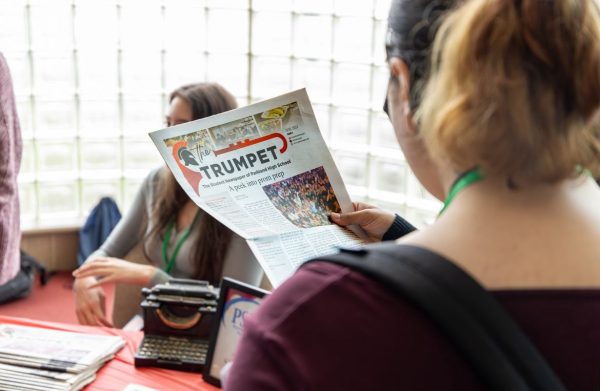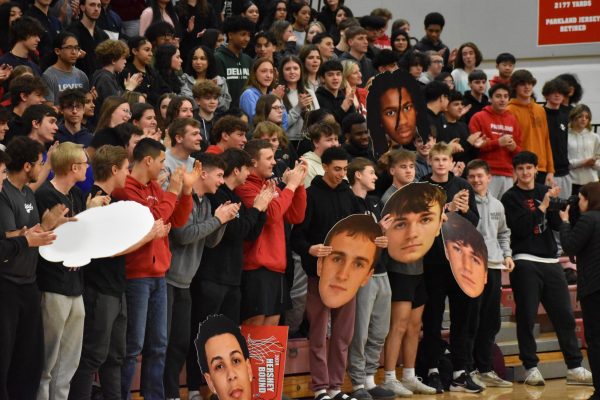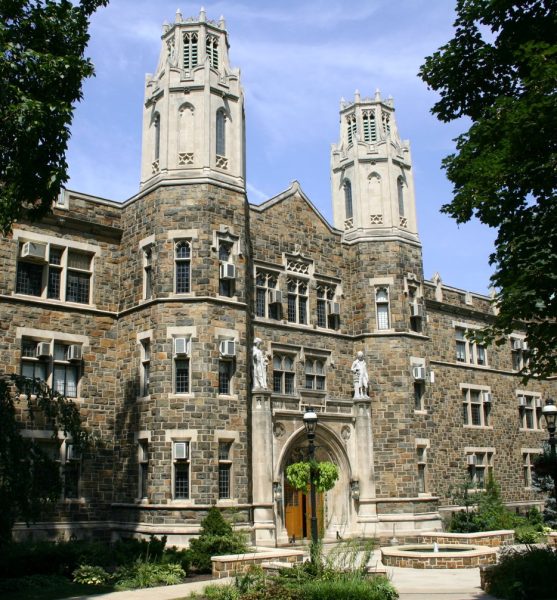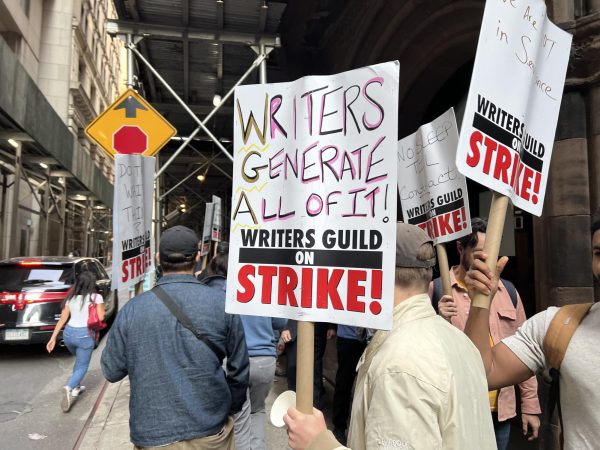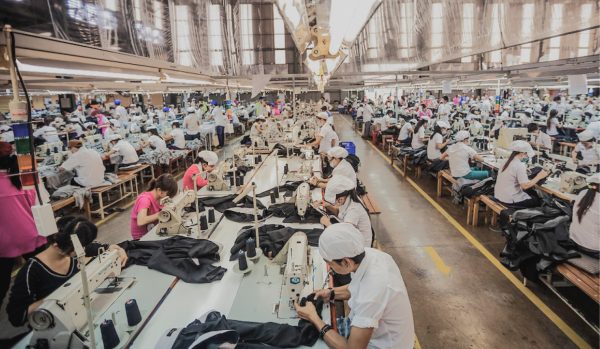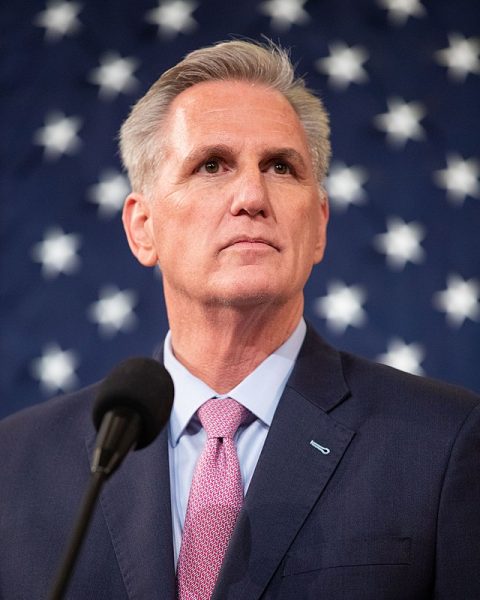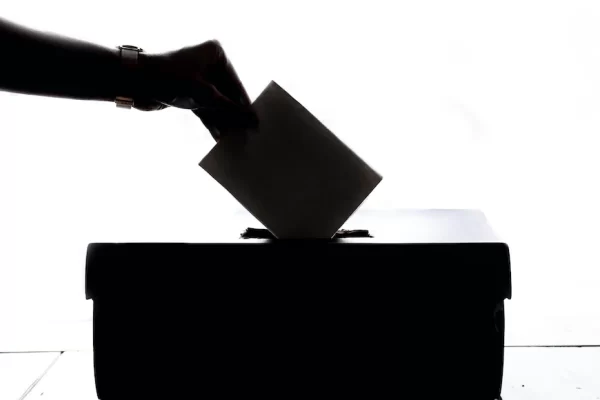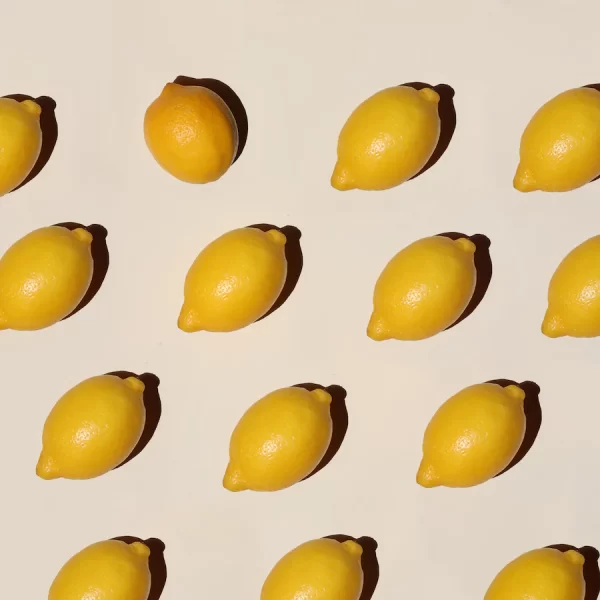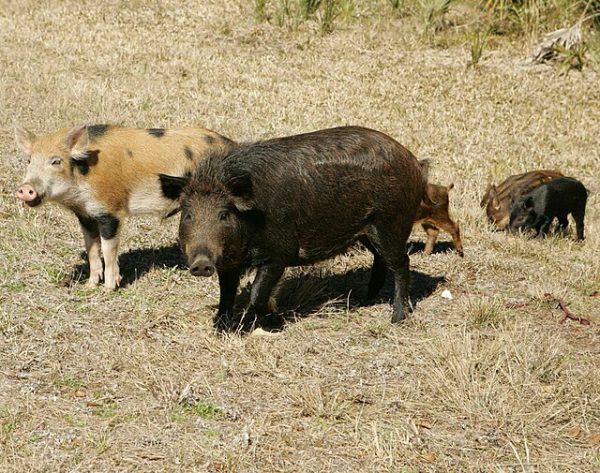Mrs.Stinebaugh, an Economics Teacher, Reviews Our Country’s Current Economy

Pictured here is AP and GHP Economics teacher Mrs.Stinebaugh.
With the pandemic, there have been twists and turns across all parts of life. However, one that has been majorly impacted is the economy. I interviewed GHP and AP Economics teacher, Mrs.Stinebaugh, to hear her thoughts on our current and past economic situation.
1. How would you describe the current economic situation?
“Well thanks, Caedyn, I’m happy to talk with you. Where we are right now is that we are recovering from a very deep and sudden contraction in the economy that took us completely by surprise starting last March obviously with the pandemic. Because it was very deep and sudden, our recovery from it is also a little bit steep. Our economic activity is increasing rapidly again, finally. At the same time, inflation, or prices going up, is also beginning to happen, some of that for good reason. For example, demand for goods and services is up which always raises prices. Some of that, however, is for a bad reason. And that is, with all this increased demand it’s hard for suppliers to gear up as quickly as consumers want things. So that makes prices go up for things that are in short supply, such as houses. Unemployment is down from where it was at the worse of this contraction that we were in. At the worst, we were at 15% and we’re around 6.5%. That number hides a lot of bad news. Sometimes when you recover from a bad economic time, people get discouraged and stop looking for work or remove themselves from the labor force and decide they’re just not going to work anymore if that job went away. When they’re not working, or not looking for work, we don’t count them as unemployed, even though those are people that rather be working. And so our unemployment rate doesn’t account for all these people who are on the sidelines who really should be working, and who we want to be working, but who have decided for one reason or another that they can’t or it’s just not worth looking for a job right now, especially if their industry is just completely decimated by the pandemic. So, that’s kind of where we are right now. We are recovering, but with some bumps.”
2. Can you explain why our economy is the way it is? Is it mainly due to COVID or are there other reasons?
“It is mainly due to COVID, but COVID like any disaster exposes other weaknesses in the economy as well. So, COVID hurt a lot of industries that deal with face-to-face contact or travel—the travel industry is a disaster right now–and a lot of personal services like restaurants, hair salons, and gyms, and places like that. Anything, where you have face-to-face contact right now, have really taken a hit, and for them, business is down purely because of COVID. Then, there are some businesses that were helped like Zoom and GrubHub. So, not all of the downturn was due to COVID, because COVID did actually help some industries. Some of it is because we have very fragile employment situations for families with children. We don’t have access to a lot of childcare here in the United States and childcare is very expensive, and so when COVID hit and the schools were not there to help take care of people’s children, a lot of people felt like they had to drop out of the labor force and unfortunately most of those people were women. Women with families and children ended up having to leave the labor force in huge numbers and that’s going to be a permanent issue if we don’t do something to address that change that was there already or that problem that was there before COVID.”
3.Has COVID impacted our economy in any positive ways?
So, there are the obvious ones that were positively impacted like Zoom, GrubHub, and all of those industries that find they have a lot more customers than they ever had before. But, I would say, besides that, it just accelerated a lot of changes that were inevitable and were probably good and were going to happen already. For example, colleges have had to really pivot in terms of making their classes more accessible. I imagine–and college was already on its way to changing–going to college for four years in person was beginning to be prohibitively expensive for most Americans, and yet more than ever we need people to get higher education and more training. What I think the pandemic accelerated was this process of making higher education more accessible by putting it online and also making it more focused. Once people figured out that they all didn’t have to go to a campus for four years, and that they could learn what they wanted to learn online, I think there’s a lot more access to degrees that aren’t necessarily four-year degrees but are specializations in very technical skills. Access to that kind of thing is exactly what our economy needs. So, the expanded access to higher education in all of these different forms, I think is a great thing for our economy. I also think making businesses, especially small businesses, get themselves online and get their technology down so that now they have wider audiences beyond just the people in their neighborhood. You look at the people that sell their things on Etsy, for example. Etsy has become very popular during the pandemic, and so now all of these sorts of cottage industries have this worldwide audience that they might not have bothered to get before, or who might not have noticed them before. I also think in terms of the medical field, like TeleMedicine, and making a medical consult available over the internet is a huge positive for everybody, and I don’t think that’s going away. We were inching towards that before the pandemic, but I think the medical community and maybe some patients were a little hesitant about it. However, when we were forced to do it and we saw it worked very well, then I think that it gave us something good that is here to stay.”
4.How would you compare our current economy to past economies?
So, when you talk about past economies that just made me think about what about the last couple of big downturns we had, and recoveries from those. So, the last couple of big downturns that we had in the economy–one was the Great Recession, of course, which was between 2007 and 2009, and prior to that we had this thing in the 1990s, early 2000s that was a result of the internet and all these internet companies coming up, and then there was a big boom in the Stock Market and then they want completely bust. So, we had a little bit of a Recession around that. The difference between those two recessions and what we have now is that those were things that were systemic or things that were wrong with the way our economy was set up, and so we had to fix those things. In the Great Recession, we had to fix the fact that people were being given mortgages when they never should’ve had mortgages. So, we had to equalize a lot of that and pass a lot of regulations with the way banks did business. But, then also, at the same time, we also had to open up financial markets to people who might not have had access to them before, so there are a lot of new regulations that came out of that. Those were all things being done to fix what was wrong with the system. This didn’t come from that, it came from outside. Our economy was just going along and doing pretty well, at least on the outside it looked as if it was doing well because unemployment was down to about 3.5%, which was unheard of. Then this thing (pandemic) came like a hurricane or a war, just completely out of nowhere, and so getting over it is going to be different and the recovery is going to be different because of that.
5.How do you think our economy will recover? For example, what do you think needs to be put in place, policy-wise?
Well, I don’t know how we’re going to end up recovering from this exactly, and I have to say one thing about economists is that we are really good historians. We’re the only kind of good at telling you what is going on now, and we are horrifying prognosticators–we are worse than the weathermen, and the other women who are out there in terms of being accurate with what’s going to happen now. The best guess from what I read from most economists is that our recovery is going to—and I think we are focusing on the right things now–since it has exposed some problems with the economy, we both have to fix the problems that COVID caused, like women’s employment, childcare, taking care of our sick people, and giving people access to health care, those are all things that were exposed by this, and also sort of the inequality of access to health care and to good-paying jobs. So, the recovery is going to have to fix those problems, and we’re going to have to work on those problems. Otherwise, what we will see is what they call a K-shaped recovery. They talk about different shapes of recovery. A U-shaped recovery is one where you go down and you stay down there for a long time, but then you slowly come back up, which we sort of did after the Great Recession. In fact, we were still slowly coming back up before the pandemic happened. You get a V-shape recovery, which we had in the early 2000s when the stock market crashed, where everyone cried for a little bit, but then we came back up. A K-shaped recovery is one where some of the population recovers and does really well, and the rest of the population just keeps sliding down into the abyss, and if we don’t fix some of those problems that were exposed by this pandemic, we are in danger of that. I also think it’s going to take some time for industries to fire back up and be able to serve all of the pent-up demand that the people who are doing are going to have. So, we are in for a little bit of a rocky time with higher prices for things, everyone will want to go on vacation at once, so hotel prices are going to be higher, gas prices are already higher, airline tickets are going to be higher, just everything will be more expensive, including food prices. We are going to see a bit of a rocky time for the next year or two, I think as the economy starts to come back. But, after one or two years I think we are going to be back to “normal”, but that assumes nothing else happens in the meantime.
Your donation will support the student journalists of Parkland High School. Your contribution will allow us to purchase equipment and cover our annual website hosting and printing costs.



